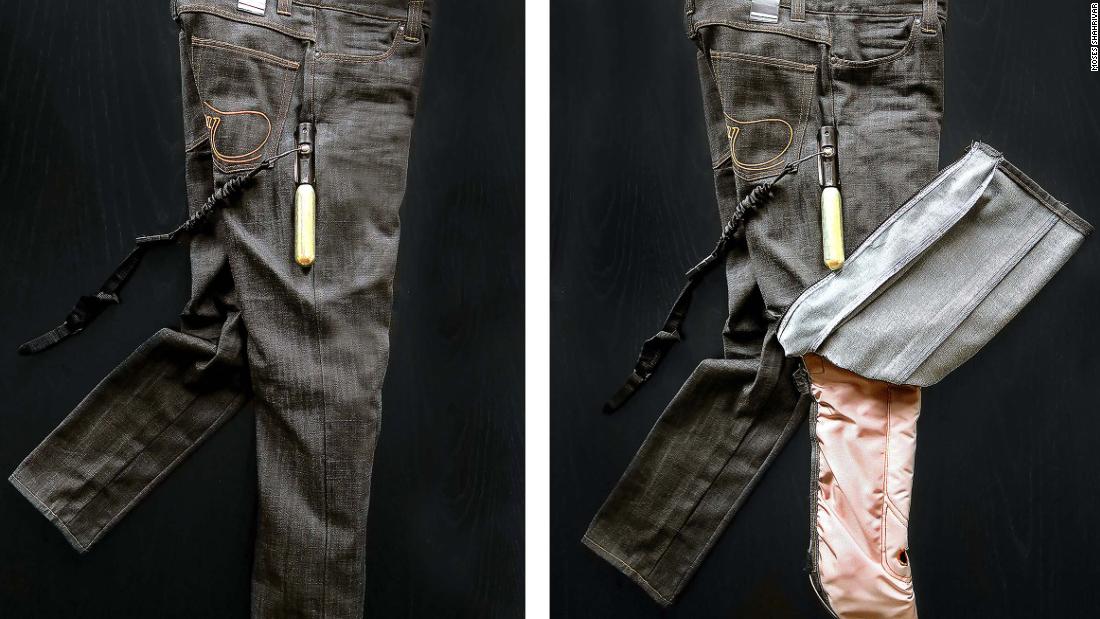But innovations in airbags can help keep motorcyclists safe.
The wearer fastens the jeans to his bike and when it falls off the motorcycle, the airbags are activated, they are compressed with compressed air and reduce the impact on the lower body. The airbag can then be emptied, refilled with gas and put back in the jeans to use again, Shahrivar explains.
Airbag Inside Sweden AB is having the jeans certified according to European health and safety standards and puts it through a series of crash tests.
The company has raised € 150,000 ($ 180,000) from the European Union to develop the idea and hopes to bring the jeans to market in 2022. The French company CX Air Dynamics has launched a crowdfunding campaign to develop a similar idea.
Airbag jackets
Shahrivar says this is the first time this protection is available for the lower body.
Equivalent technology for the torso has been around for over 20 years. Motorcycle airbags are fitted under a jacket and protect the chest, neck and sometimes the back.
Early versions were attached to the bike, such as Shahrivar’s jeans, but recently autonomous electronic airbags have been developed that instead use high-tech sensors to detect when the rider is about to fall.
Among the autonomous airbags on the market is a system created by the French firm In & motion.
The company started designing portable airbags for professional skiers in 2011 and has since adapted the technology for motorcyclists. Instead of activating airbags, it created a ‘brain’ consisting of a GPS, gyroscope and accelerometer. This box is slightly larger than a smartphone, and is placed in the back of a compatible vest.
“The sensors measure movements in real time and the algorithm can detect a fall or an accident to inflate the airbag just before an accident,” Anne-Laure Hoegeli, communications manager at In & motion, told CNN Business.
The box measures the rider’s position 1,000 times per second. Once a “irreparable imbalance” is detected, the airbag activates and inflates fully to protect the user’s chest, abdomen, neck and spine, Hoegeli explains. It only takes 60 milliseconds.
In & motion recently raised € 10 million ($ 12 million) in funding for expansion in Europe and the United States.
Although the basic operation is similar to other electronic airbags on the market, In & motion has an affordable subscription service, explains Emma Franklin, Deputy Editor of Motorcycle News. “Their system has made airbags more affordable for everyday people in many ways,” Franklin told CNN Business.
Riders can buy the box straight for $ 400 or rent it for about $ 120 a year at In & motion. Users in France also have access to an institution that calls emergency services in case of an accident.
“From the few articles, case studies, and articles I’ve seen, it seems like a very useful tool,” Frampton says.
“I’m a proponent of them – the chest, neck and spine are all areas where you could sustain life – threatening injuries.”
